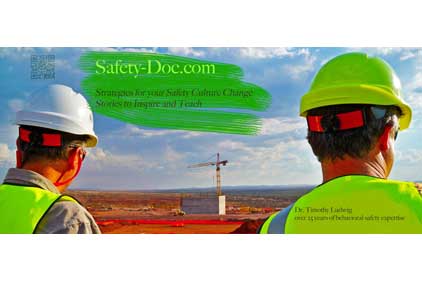Wyoming is growing carrots

I have to meet this congressman in the state house in Wyoming!
Representative Tom Lubnau sponsored a bill, HB 89, which strengthened Wyoming OSHA’s “Courtesy Inspection” program. This proactive safety program, in place for a decade, attempts to reshape state oversight from an arm of government that uses penalties to enforce safety requirements laws to one that offers free assistance from an OSHA consultant who offer feedback for corrective actions without the penalties.
The goal is nothing short of culture change, one in which industry and its employees voluntarily report safety issues and seek help when needed. Dustin Bleizeffer brings this unique government policy to light in his reporting on WyoFile(Picked up by Industrial Safety and Hygiene News).
An epidemiologist named Tim Ryan analyzed 17 years of state data and concluded that 85% of Wyoming worker fatalities were caused by not following safety procedures because of a lack of a “Culture of Safety” in Wyoming. He blamed bad safety communication, absent training, a focus on production over safety, and variance in safety standards for the injury rate.
All of these issues are classic Safety Culture Drivers, so it is no surprise.
While non-fatal injuries dropped 25%, Wyoming remains the 4th deadliest state in the nation for workers. Wyoming’s law is under pressure by both employee rights groups as well as industry associations to amend the “Courtesy Inspection” program to include mandatory post-injury inspections, penalties for non-reporting due to incentives/disincentives, and public reporting of injury records.
Some what the proverbial “stick” back.
It’s a reasonable and important debate they’re having. It’s nice to see government safety policy based on behavioral science instead of the illusionary impact of the enforcement-punishment cycle, which ultimately punishes open and honest reporting.
I was in West Virginia recently working with coal miners working for one of the safest mining companies in the industry. It was in West Virginia where Massie Energy killed 29 miners in 2010. The investigation after a disaster at Upper Big Branch Minerevealed a deadly culture of hiding safety violationsparticipated in by managers, employees, and mining safety inspectors alike. It serves as a cautionary tale for Wyoming.
As I got to know this group of West Virginia coal miners I asked them how a group of miners could be complicit with management as it skirted state-mandated safety procedures.
They answered simply: “fines."
I asked them how company fines caused the miners to lie. “We need the jobs… and when the company gets fined we get hammered too.”
Furthermore, in West Virginia inspectors can fine individual miners as well. This created a scandalous culture of non-compliance shared by management and employees. Add the inspectors who, for various reasons, alerted sites days before they arrived – you end up in disaster. Wyoming beware!
Part of the reason there is little evidence of success in Wyoming is a lack of participation; only 2% of employers have asked for the Courtesy Inspections. The term “Double-Down” is popular in politics today. In this case I’m happy to hear that Representative Lubnau is doubling down instead of folding.
To change a Safety Culture the team, employees and management alike, need to be ready, and the company needs to invest in it, to “till the soil”.
In this case, a whole state needs to. So…here are suggestions on growing carrots in Wyoming.
Wyoming companies remained greatly undersupplied by the state OSHA consultants. One drilling company owner said it took months to get a Courtesy Inspection. So, through Representative Lubnau’s bill, Wyoming has hired seven new OSHA courtesy consultants and is spending half a million new dollars in grant money available to employers who want to use the money to establish or improve their safety programs.
Their goal is to increase voluntary reporting and create a useful database to bring down the injury rate.
Carrots help you see clearer.
